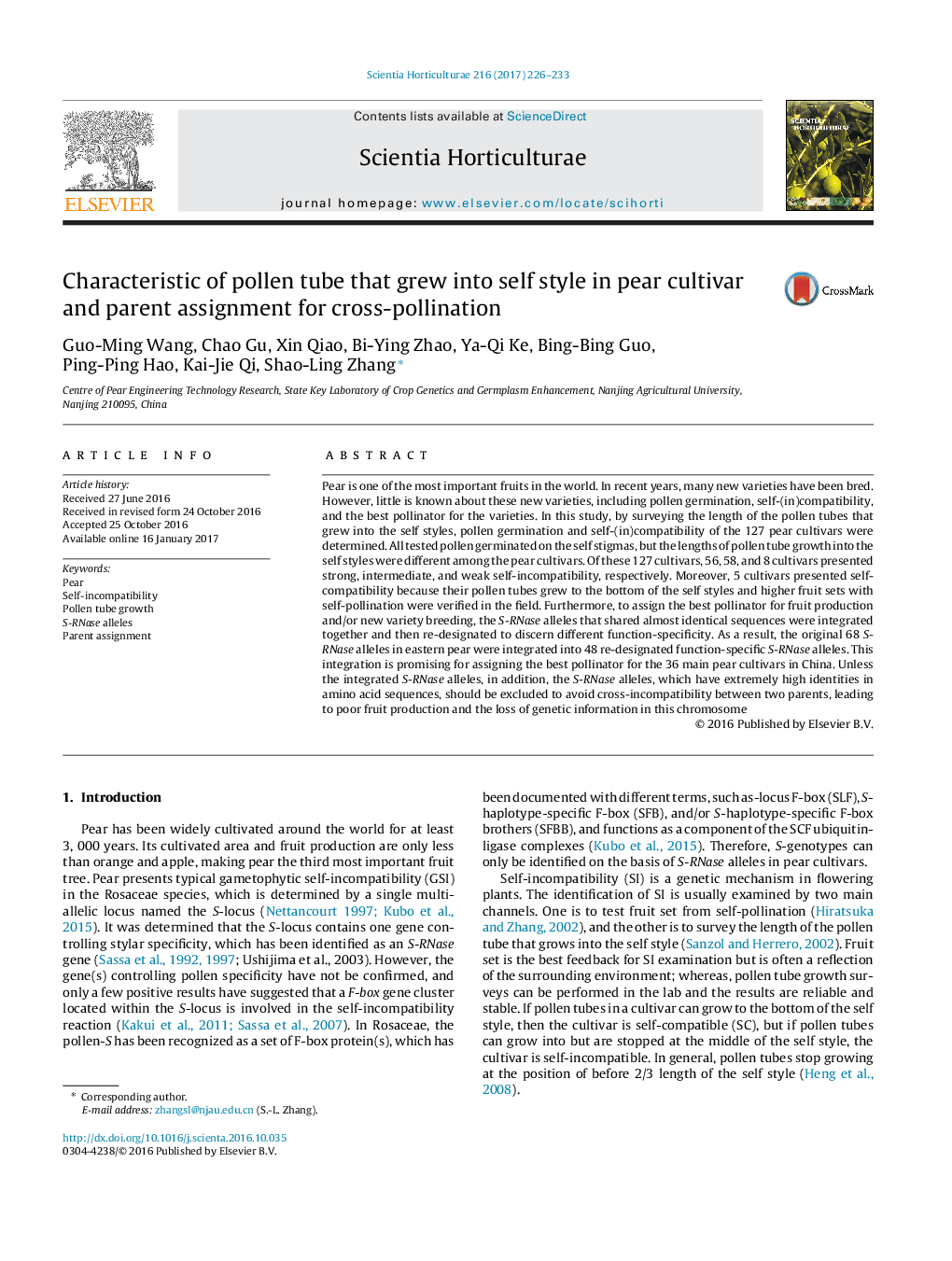| کد مقاله | کد نشریه | سال انتشار | مقاله انگلیسی | نسخه تمام متن |
|---|---|---|---|---|
| 5769774 | 1628782 | 2017 | 8 صفحه PDF | دانلود رایگان |
- By surveying the length of the pollen tubes that grew into the self styles, pollen germination and self-(in)compatibility of the 127 pear cultivars were determined.
- The original 68 S-RNase alleles in eastern pear were integrated into 48 re-designated function-specific S-RNase alleles.
- This integration is promising for assigning the best pollinator for the 36 main pear cultivars in China.
Pear is one of the most important fruits in the world. In recent years, many new varieties have been bred. However, little is known about these new varieties, including pollen germination, self-(in)compatibility, and the best pollinator for the varieties. In this study, by surveying the length of the pollen tubes that grew into the self styles, pollen germination and self-(in)compatibility of the 127 pear cultivars were determined. All tested pollen germinated on the self stigmas, but the lengths of pollen tube growth into the self styles were different among the pear cultivars. Of these 127 cultivars, 56, 58, and 8 cultivars presented strong, intermediate, and weak self-incompatibility, respectively. Moreover, 5 cultivars presented self-compatibility because their pollen tubes grew to the bottom of the self styles and higher fruit sets with self-pollination were verified in the field. Furthermore, to assign the best pollinator for fruit production and/or new variety breeding, the S-RNase alleles that shared almost identical sequences were integrated together and then re-designated to discern different function-specificity. As a result, the original 68 S-RNase alleles in eastern pear were integrated into 48 re-designated function-specific S-RNase alleles. This integration is promising for assigning the best pollinator for the 36 main pear cultivars in China. Unless the integrated S-RNase alleles, in addition, the S-RNase alleles, which have extremely high identities in amino acid sequences, should be excluded to avoid cross-incompatibility between two parents, leading to poor fruit production and the loss of genetic information in this chromosome
Journal: Scientia Horticulturae - Volume 216, 14 February 2017, Pages 226-233
